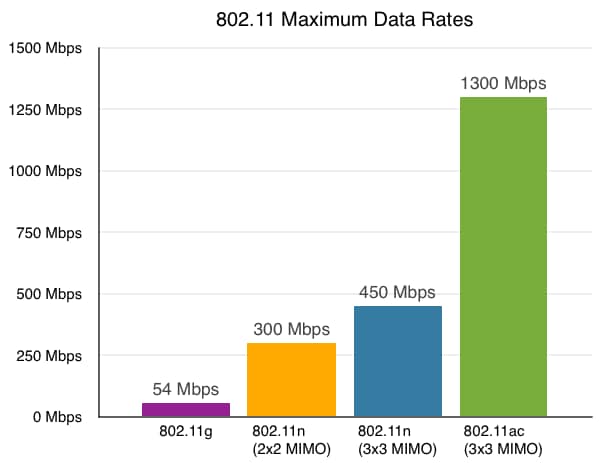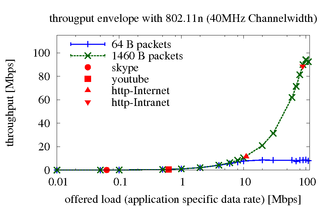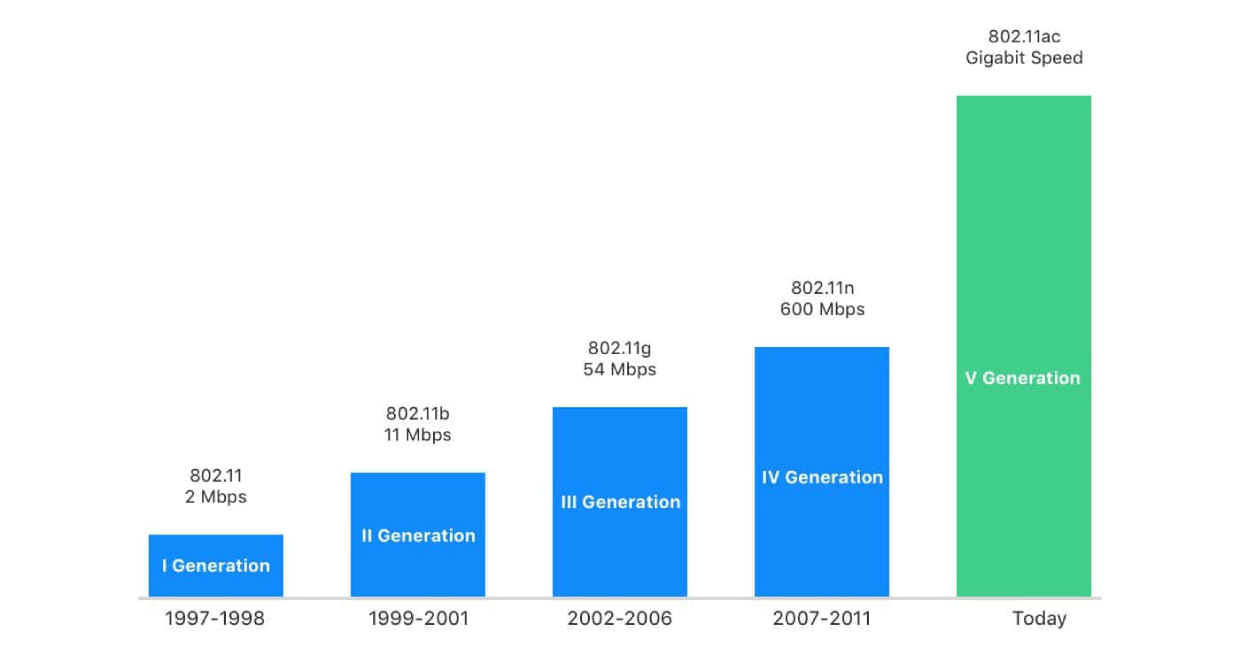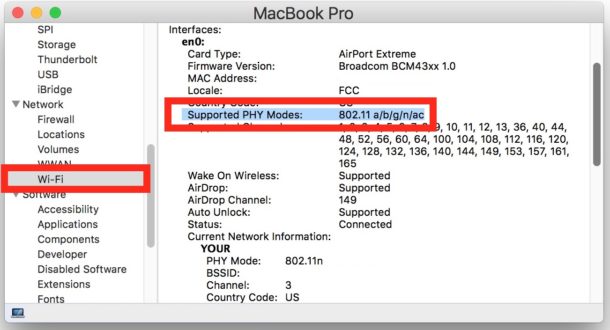802 11a B G N Speed
It supported a maximum theoretical transfer rate of 300 mbps and could reach up to 450 mbps when using three antennae.
802 11a b g n speed. Approved in june 2003 802 11g was the successor to 802 11b able to achieve up to 54mbps rates in the 2 4ghz band matching 802 11a speed but within the lower frequency range. With the 802 11n standard wi fi became even faster and more reliable. Most home wireless routers are compliant with this standard.
It is the most widely accepted standard of a b g and n wireless networks and is most deployed. Because 802 11b gained in popularity much faster than did 802 11a some folks believe that 802 11a was created after. Home appliances may interfere on the unregulated frequency band.
The specification in 802 11g was able to increase the maximum speed to 600 mbps with higher bandwidth. 802 11a also suffers from interference but locally there may be fewer signals to interfere with resulting in less interference and better throughput. 802 11ac offers backward compatibility to 802 11a b g n and bandwidth rated up to 1300 mbps on the 5 ghz band plus up to 450 mbps on 2 4 ghz.
802 11b 2 4ghz legacy for most applications 802 11b which operates at 2 4ghz is sufficient. 802 11n can operate on multiple frequency bands 2 4 ghz and 5 8 ghz and has backward compatibility with 802 11a b g. Cons of 802 11b slowest maximum speed.
Back in those days when the 802 11a standard was first created the 5ghz band couldn t really be used in most places of the world it wasn t yet an unlicensed radio band so 802 11a didn t become very popular back then. While 802 11b was in development ieee created a second extension to the original 802 11 standard called 802 11a. Pros of 802 11n very fast maximum speed 600 mbps.
The generation of wi fi that first signaled popular use 802 11ac uses dual band wireless technology supporting simultaneous connections on both 2 4 ghz and 5 ghz wi fi devices. 802 11a is also one of the older standards.






/wireless-standards-802-11a-802-11b-g-n-and-802-11ac-816553-36294250342e404eabe7dc94bc7a40f9.png)








/wireless-standards-802-11a-802-11b-g-n-and-802-11ac-816553-36294250342e404eabe7dc94bc7a40f9.png)


